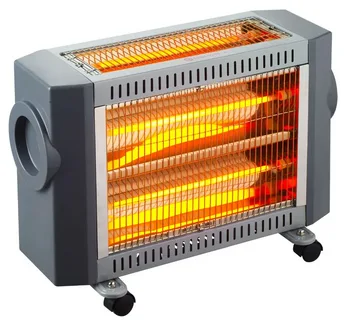Have you ever wondered why your space heater doesn’t keep you as warm as you’d like? Maybe you’ve had it for years and it’s time for a replacement. You could also be using the wrong type of heater.
There are a handful of reasons your heater could be falling short of your expectations, and here are the most common.
- You aren’t using infrared heat
You have several main options for the type of heat you use: ceramic, convection, and infrared. Although ceramic is often advertised as a different type of heat, it still works based on convection, which heats the air inside of a space.
Infrared heaters are superior for several reasons. Not only are they more efficient than convection-based heaters in terms of energy output, but infrared is inherently warmer because it heats up your skin and clothes rather than just heating the air.
When you only heat the air, the result is disappointing in a truly cold environment. If you just need a tiny bit of heat, it’s probably fine, but if it’s 45°F (7°C) or lower, you’ll struggle to stay warm using convection heat.
On the other hand, with infrared heat, you can open a window and still feel relatively warm as long as you’re in front of the heater because your skin directly absorbs the heat.
- Your heater is just old
If your heater isn’t keeping you warm, it’s very possible that it’s just old. Over time, every electronic appliance is prone to wearing out, and heaters are no exception. Heating elements and other mechanisms break down over time, and space haters don’t perform like they once did.
Having an old space heater can also make your electric bills higher if it never produces enough heat to reach the temperature set on the thermostat. It will just keep running and not producing enough heat. If you think your heater is too old, or if you notice the cord is frayed, it’s time to get a new one.
- Your house is drafty
It’s hard to keep a drafty house warm, no matter what kind of heater you have. If cold air is getting in, heat is escaping the same way.
The most common draft sources are windows and doors. If you feel a blast of cold air coming into your home while you’re trying to warm up next to the heater, you have a draft.
Sealing drafts is easy, provided you can find the source. There are draft kits for windows that are easy to apply, and you can find door draft blockers that either get stuffed under the door or act as a thick curtain that traps the cold air.
Once you seal all the drafts, you should stay warmer. If not, consider getting an infrared heater or refer to the next tip regarding insulation.
- Your walls, roof, or floors aren’t well-insulated
Heat rises, which means it’s going to move directly to the top of your home and escape if your roof isn’t insulated properly. If you don’t know how well your home is insulated, hire a pro to assess the situation. There are several ways to add insulation without tearing your frame apart, like spraying it into the walls.
It’s important to have insulated walls and floors, too, because otherwise, that’s how cold air will come into your home and counteract your effort to heat your space.
If you don’t have the funds to insulate your roof, you can reflect radiant heat by tacking mylar to the inside of your roof to reflect the heat back down. Or, you can cut panels made of foam that are lined in mylar on one side. Doing this won’t look that great, but it will make a significant difference in terms of warmth.
- The temperature is beyond a space heater’s capabilities
Sometimes, you just can’t heat an area with a space heater if the temperature is too low. Even larger heaters that sit on wheels are no match for extremely low temps. If your house is too cold to heat with a space heater, consider installing central heat and insulating your home to the highest degree possible.
Want to stay warm
? Get a better heater
With so many possible reasons your heater might not be enough, you’ll need to do some troubleshooting to pinpoint your specific issue. However, in most cases, staying warm is a matter of choosing the right type of heat and spending the money on a better unit from the start.

























